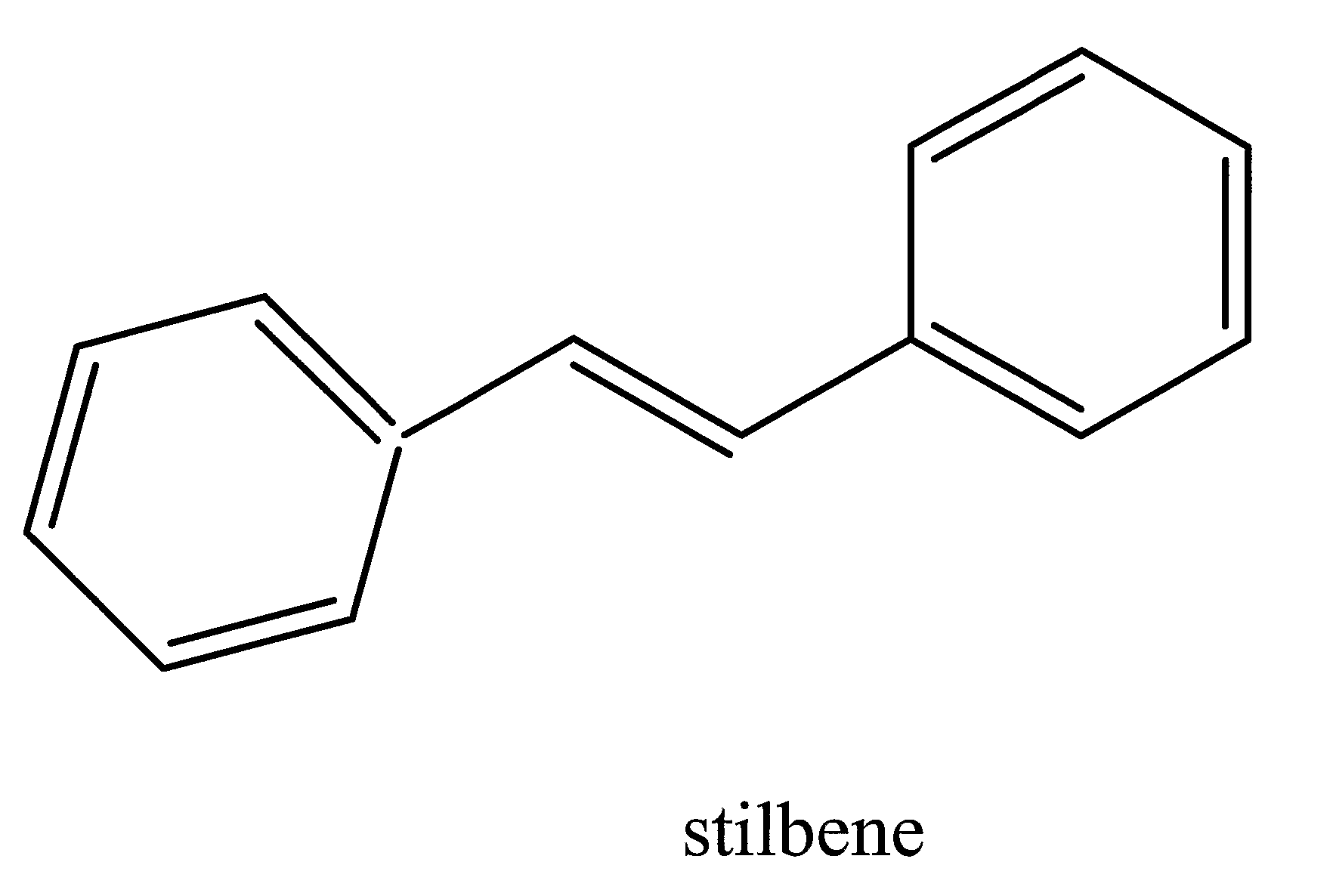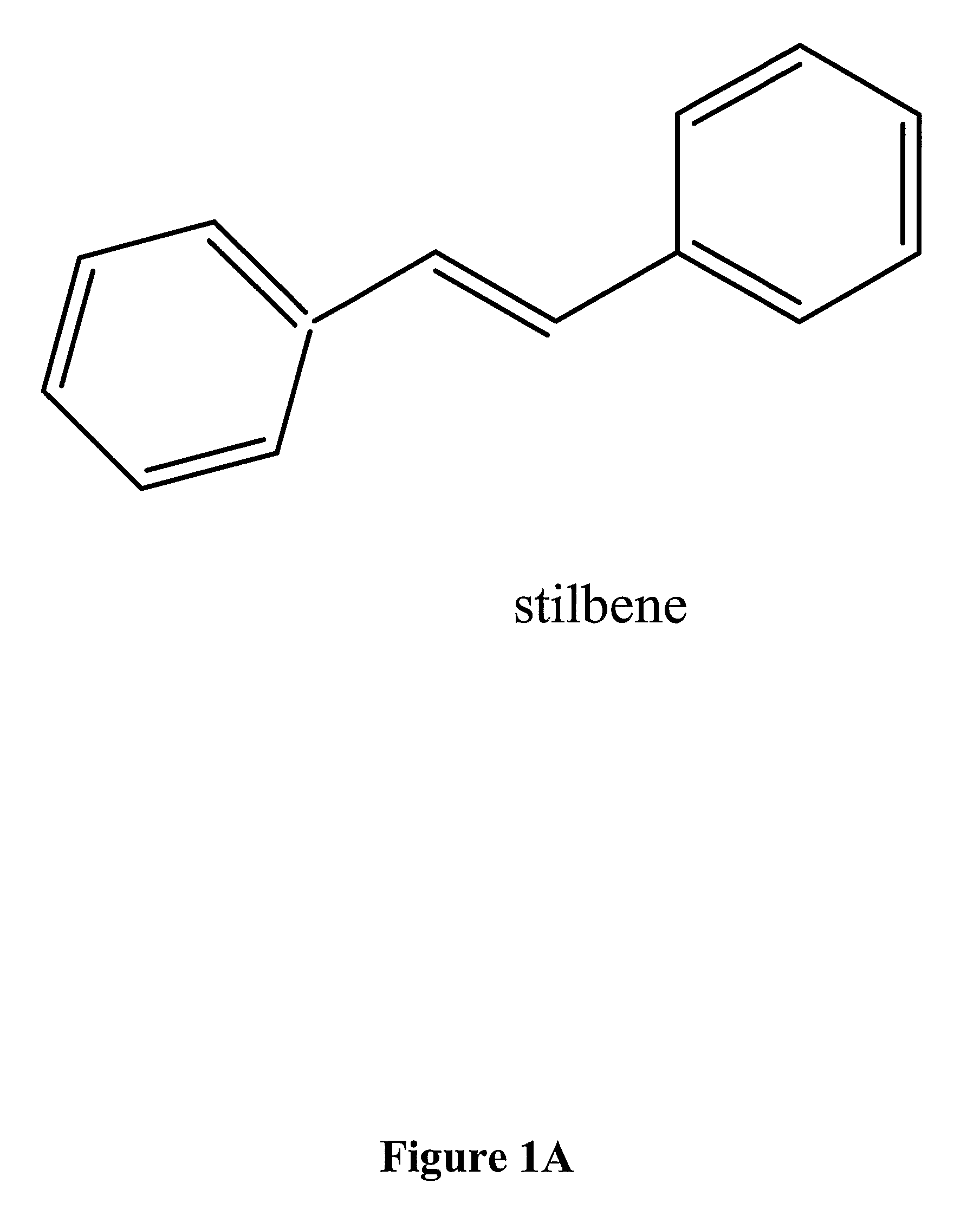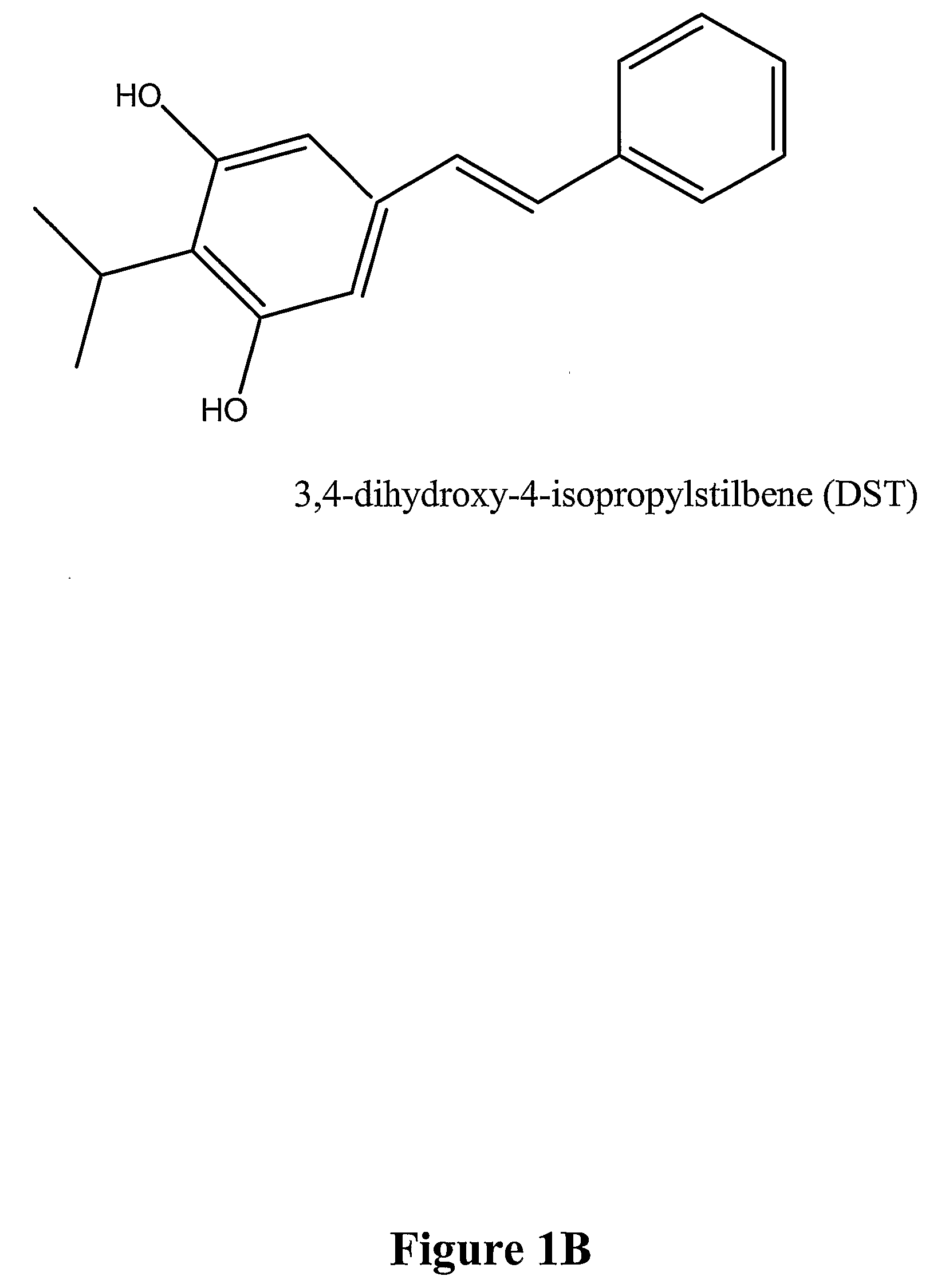Insecticidal and Nematicidal Compositions and Methods of Use
a technology of insecticidal compositions and nematodes, applied in the field of insecticidal and nematicidal compositions and methods of use, can solve the problems of small portion of parasitic and considered pests, loss of significant portion of a particular crop, and inability to reproduce, so as to reduce the viability of nematodes, inhibit growth or reproduction, and improve the solubility of stilbenes
- Summary
- Abstract
- Description
- Claims
- Application Information
AI Technical Summary
Benefits of technology
Problems solved by technology
Method used
Image
Examples
example 1
[0080]Identification of Nematicidal Activity of DIDS
[0081]Using the known susceptibility profile of certain nematode species for DST as a guide for selecting species to test, DIDS was tested for toxicity in nematodes. Based on the profile for DST, it was hypothesized that M. incognita would be susceptible to inhibition by DIDS, and that H. bacteriophora would be resistant (H. bacteriophora is a close relative of H. megidis that also carries Photorhabdus luminescens). It was postulated that, if AT are involved in toxicity, DIDS should be toxic to the plant parasitic nematode M. incognita and inactive to the symbiont-containing nematode H. bacteriophora.
[0082]The methods for culturing the nematodes and the toxicity assays we performed as follows:
[0083]Experimental Methods for the Toxicity Studies:
[0084]Culture Methods
[0085]Heterorhabditis bacteriophora was cultured using Galleria inellonella L. (Lepidoptera: Pyralidae) as a host insect. Briefly, insects were infected by exposing them...
example 2
[0091]Effect of DIDS on a Plant Parasite and on a Free-Living Nematode
[0092]To further characterize the nematode-inhibiting effect of a stilbene compound (DIDS), experiments were performed as described above, using a 96 well plate and 10-30 nematodes per well, and using the plant parasite M. incognita and the free-living C. elegans. The results are depicted in Tables 1 and 2.
TABLE 1Toxicity of DIDS On C. elegansDayLC50 (ppm)95% CISlopeχ2 (df)1-day (24 hr)196.13 89.67-1632.871.43 ± 0.350.24 (3)2-day (48 hr)83.70 52.20-226.341.45 ± 0.290.46 (3)3-day (72 hr)31.5325.12-42.871.87 ± 0.280.41 (3)5-day (120 hr)15.6913.05-18.372.86 ± 0.360.32 (3)7-day (168 hr)10.67 8.81-12.224.57 ± 0.712.44 (3)
TABLE 2Toxicity of DIDS On M. incognitaDayLC50 (ppm)95% CISlopeχ2 (df)1-day (24 hr)160.03 78.92-1668.691.77 ± 0.502.47 (3)2-day (48 hr)97.91 59.37-277.451.52 ± 0.302.27 (3)3-day (72 hr)37.8429.51-54.981.83 ± 0.300.44 (3)5-day (120 hr)17.0714.23-20.002.75 ± 0.360.33 (3)7-day (168 hr)11.58 6.72-15.024.04...
PUM
| Property | Measurement | Unit |
|---|---|---|
| concentrations | aaaaa | aaaaa |
| time | aaaaa | aaaaa |
| resistance | aaaaa | aaaaa |
Abstract
Description
Claims
Application Information
 Login to View More
Login to View More - R&D
- Intellectual Property
- Life Sciences
- Materials
- Tech Scout
- Unparalleled Data Quality
- Higher Quality Content
- 60% Fewer Hallucinations
Browse by: Latest US Patents, China's latest patents, Technical Efficacy Thesaurus, Application Domain, Technology Topic, Popular Technical Reports.
© 2025 PatSnap. All rights reserved.Legal|Privacy policy|Modern Slavery Act Transparency Statement|Sitemap|About US| Contact US: help@patsnap.com



